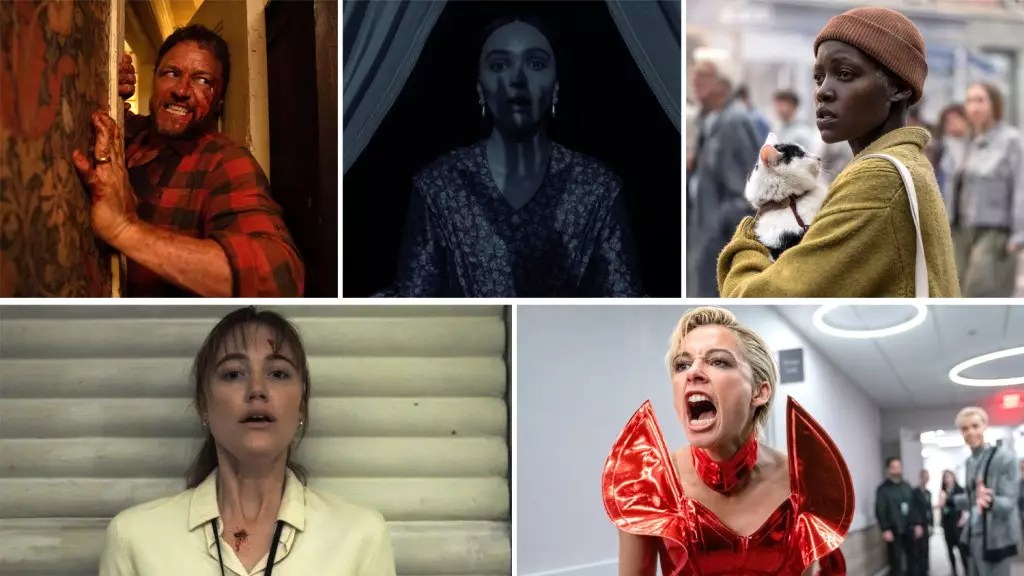As Hollywood continues to reel from the evolving landscape of film distribution and revenue models, the year 2024 has surprisingly shone a spotlight on horror films as key players in turning profits. The focus of the entertainment industry is gradually shifting from the traditional box office model to considering downstream revenues, especially as streaming services take center stage. While established studios like Disney and Warner Bros rake in profits through strategic deals, it’s the horror genre that has emerged as an unexpected powerhouse this year, challenging preconceived notions of what it means to be a blockbuster.
The Financial Might of “A Quiet Place: Day One”
Leading the charge is Paramount’s “A Quiet Place: Day One,” a prequel that marks an ambitious expansion of a successful franchise. Despite the absence of the original cast, the film netted an impressive $83.6 million in profits. This achievement is remarkable, particularly for a third installment in a horror series, especially when considering that it opened to $52.2 million, surpassing the expectations set by earlier releases. John Krasinski’s investment in creative storytelling, even from a distance, exemplifies how a solid franchise foundation is key to drawing audiences, which allows it to thrive under new creative leadership. The film’s success underscores a most valuable lesson: brand loyalty can bolster box office earnings, even without the original cast. The burgeoning universe surrounding “A Quiet Place” adds depth to its narrative, enticing audiences to come back for more.
Hollywood’s Dark Unexpected Gem: “Nosferatu”
Another standout success of 2024 is Focus Features’ “Nosferatu,” which surprised many by raking in $70 million. This period horror film reintroduces audiences to the classic Dracula tale while leveraging Robert Eggers’ reputation as a daring filmmaker. With a creative marketing campaign that stoked anticipation without revealing too much, the film became the second highest-grossing feature from Focus behind “Downton Abbey.” Its success showcases the artistry of crafting a horror narrative that both appeals to genre aficionados and casual viewers seeking a blend of visual grandeur and terror. The strategic timing of its release during the awarding season, combined with the film’s avant-garde aesthetic, provided a refreshing antidote to the typical holiday fare, proving that horror can capture the essence of both artistry and profitability.
Sequels that Innovate: “Smile 2”
Following closely behind, “Smile 2” generated substantial buzz, netting $55.4 million in profits. Paramount’s understanding of sequel dynamics and retaining original creator Parker Finn played a pivotal role in its success. By creatively expanding on the backstory of the eerie entity that haunts its characters, the sequel stands as a testament to the ingenuity required to keep franchises alive. The marketing for the film was ingeniously integrated into the character’s narrative, offering fans a comprehensive experience rather than a mere sequel. This attention to detail demonstrates that horror sequels can innovate and offer something new rather than simply relying on the success of their predecessors.
Low-Budget Triumphs: “Speak No Evil” and “Longlegs”
The Blumhouse model continues to exemplify the power of low-budget filmmaking with gross profits of $50 million from “Speak No Evil.” This film, which opened modestly, showcased the effectiveness of reducing production costs while still engaging audiences with a psychologically disturbing storyline. The genius of Jason Blum’s strategy is evident, as he cleverly flipped the narrative expectations, providing audiences a remade story with a twist. This was further bolstered by the film’s strategic release date, allowing it to carve out its niche in the horror market.
Conversely, “Longlegs” emerged as a delightful surprise, pulling off a net profit of $48 million through a minimalist yet effective promotion strategy. Neon’s unique storytelling approach coupled with a thrilling marketing campaign kept crucial elements of the plot under wraps, building intrigue among potential viewers. The execution stands as a shining example of how creativity and strategic thinking in budgetary constraints can lead to astonishing bottom-line success.
The Wild Card: The Streaming Effect
In this tumultuous landscape, it’s vital to consider the dual narrative of streaming and theatrical releases. Often, films from streaming platforms are excluded from traditional box office analysis, despite delivering significant profits ultimately. Companies like Apple and Amazon must evaluate cinematic success differently—a secretive assessment that can often go unnoticed by traditional metrics. This evolving landscape hints at a future where streaming could become a more dominant force in determining a film’s value and sustainability after release, thereby changing the dynamics of box office expectations.
The box office triumphs of 2024 illustrate the horror genre’s capacity to captivate audiences while simultaneously achieving notable profitability. As filmmakers continue to push creative boundaries and adapt to the shifting landscape of film consumption, it is clear that horror is not just a thrill—it’s a lucrative business.


Leave a Reply